Can You Use Interior Paint Outside?
Is it possible to apply interior paint outside and how to do it right
Sometimes, when you have too much leftover paint, you may wonder whether it is possible to apply interior paint on the exterior surfaces and vice versa. And since the answer is going to be pretty complex, we decided to explain to you in detail what types of paint can be used outdoors and what types can not.
Read carefully since paint is a tricky thing. If you apply a wrong paint on a wrong surface, the result can more likely disappoint you and even ruin the whole painting project rather than having a positive effect.
Can You Use Interior Paint For Outside?
Simply speaking, paints that are meant for being applied on interior surfaces can not be used on the surfaces that are outside. The reason is obvious: such paints lack special heavy duty mildewcide and other chemicals that allow exterior paints to withstand rain, snow, heat, and other weather conditions. This is why interior paints are meant for indoor use only!
Besides, they often have rather specific characteristics that work well in the interior environment (for instance, low odor or spatter resistance, better flow or coverage abilities).
If you apply such paint on the outdoor surface, they will very soon break down, fade, and chalk very quickly. In addition, such paint lacks adhesion that the exterior paint has which means that they will void any warranty!
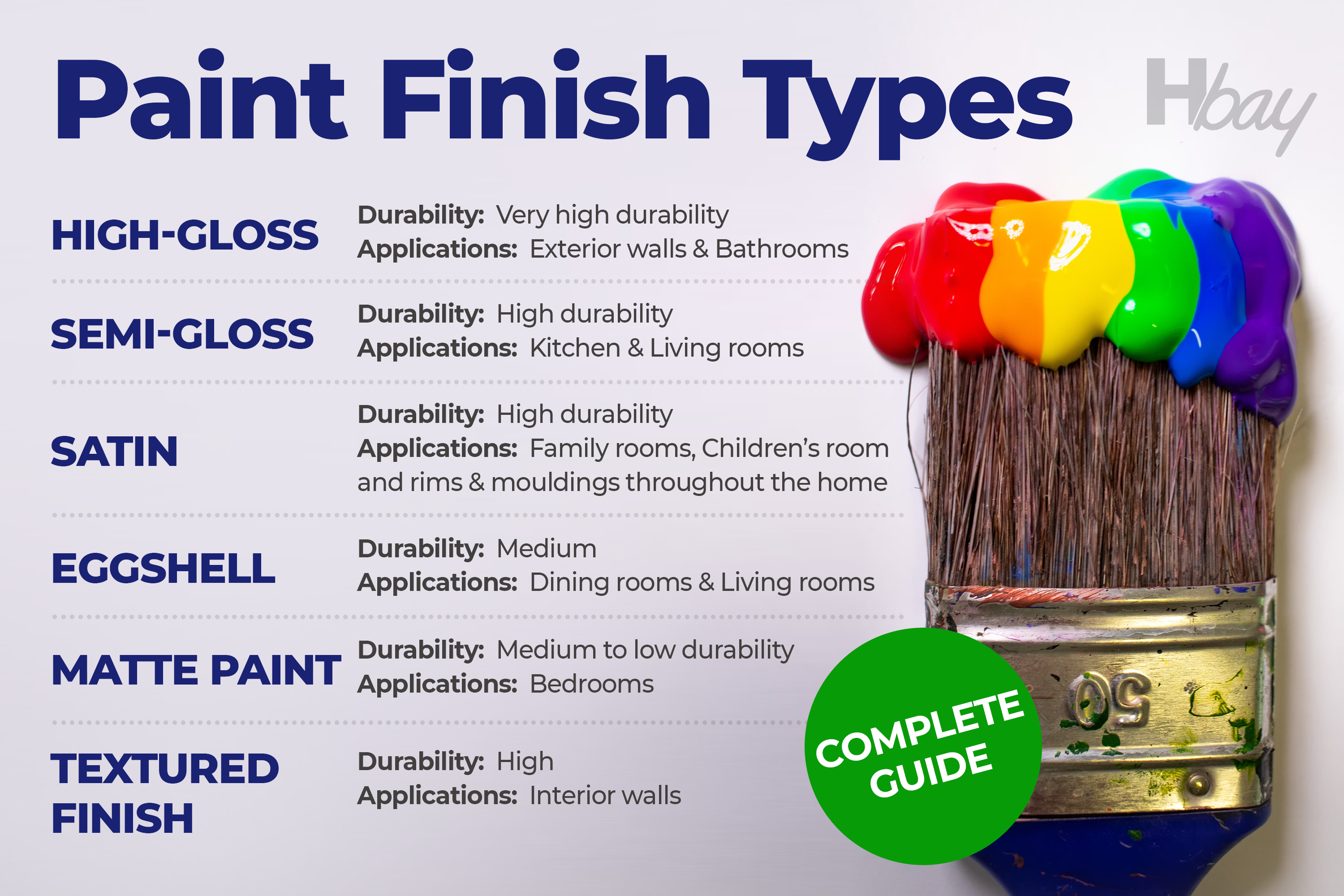
Housekeepingbay.com
What Is Interior Paint?
Interior paints create a specific group of paints that are created for only the indoor appliance. They are made to adhere to different types of surfaces, to reflect or to absorb light, and survive the daily abrasion and wear of cleaning and other regular contacts.
In addition, interior paints are not meant for withstanding the freeze-and-thaw cycles or any harsh elements of nature. Since all paints are made of four major components that are binders, pigments, additives, and base, these are also what make the interior and exterior paints differ from each other. Also, these components are the reasons why those types of paints are not interchangeable.
And now let’s take a closer look at each of the interior paints’ components to better see what makes them different from the exterior counterparts.
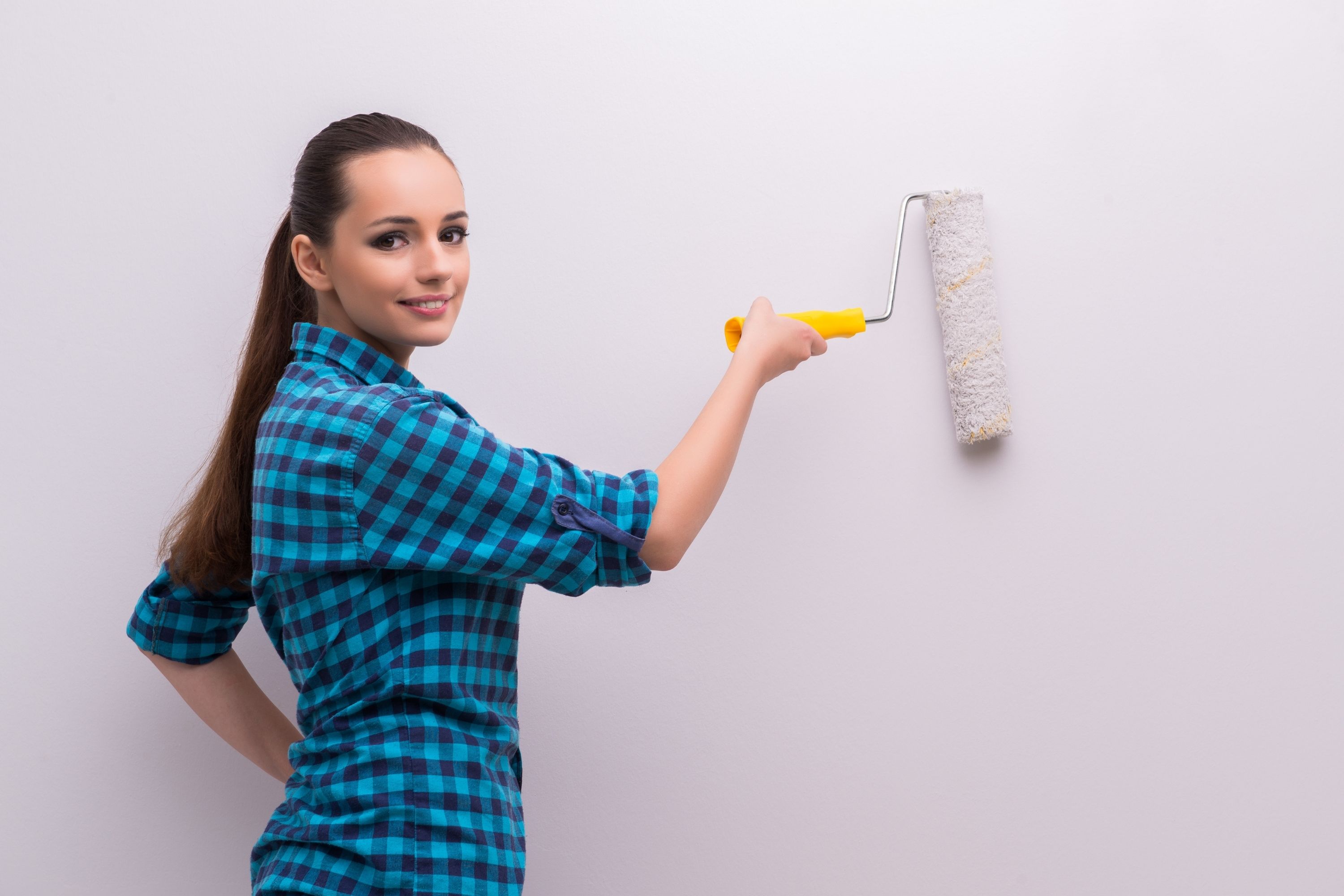
Credits: Elnur, via Canva.com
Table of Contents
The Base
Interior paints can be either water-based (for instance, latex or acrylic paints) or oil-based (such as alkyd paints). Water and oil-based paints have distinct adhesive properties and use to offer.
For instance, you can easily paint water-based or latex paint over the oil-based one but only after you apply the oil-based primer or a stain lock sealer first. Also, oil-based paints can be painted over the water-based ones after they get totally dry. For better application, you may need to work on a painted surface with sandpaper!
Each of these types is also presented in high-gloss, semi-gloss, and flat sheen. If you want to figure out which sheen your paint has, simply wipe it with a cloth soaked with denatured alcohol. Did it pick up any color? If yes, then your paint is water-based. Was there no color left on the cloth? In this case, your paint is oil-based.
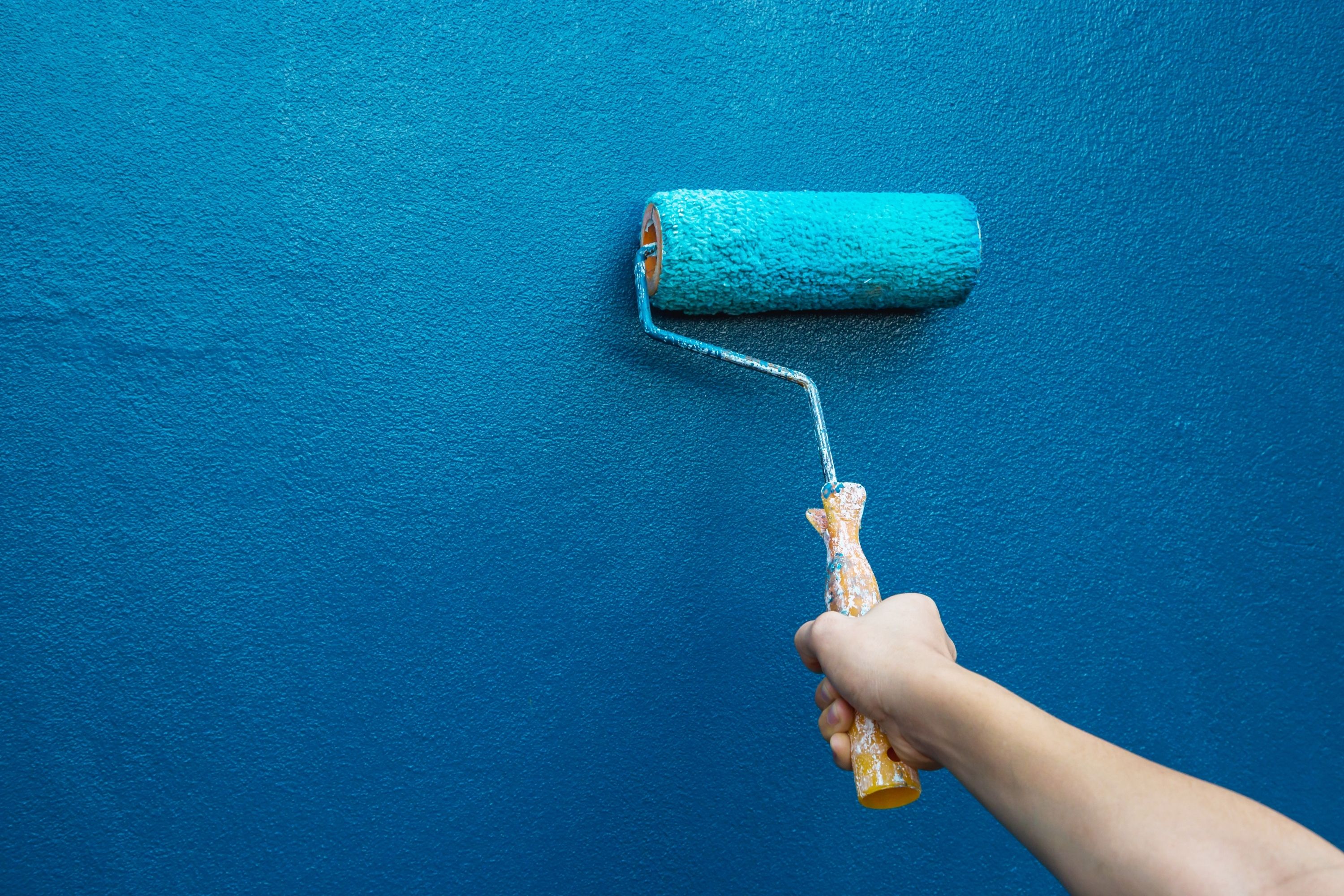
Credits: GIANT7, via Canva.com
Pigments
Pigments that are added to paints can be either organic or non-organic. The type of pigment used determines how durable the color will be, by the way, which also affects the frequency of repaintings needed.
Speaking of organic pigments, they usually have either animal or vegetable origin and they can not be called durable. Also, they tend to be rather transparent.
Non-organic pigments, on the other hand, are solid mineral colors with completely natural origin. However, they are often modified for being used in paint manufacturing.
This type of pigment is also very long-lasting and it tends to create deep and rich colors.

Credits: warrengoldswain, via Canva.com
What About Binders?
Binders create another building element of a paint. They are needed for holding the pigment together. Like this, your paint is able to create a durable film on the surface you apply it to.
For example, in latex paints, binders must be completely acrylic, not a blend! Whilst oil-based paints usually contain drying oils, such as tung, linseed, or even modified oils.
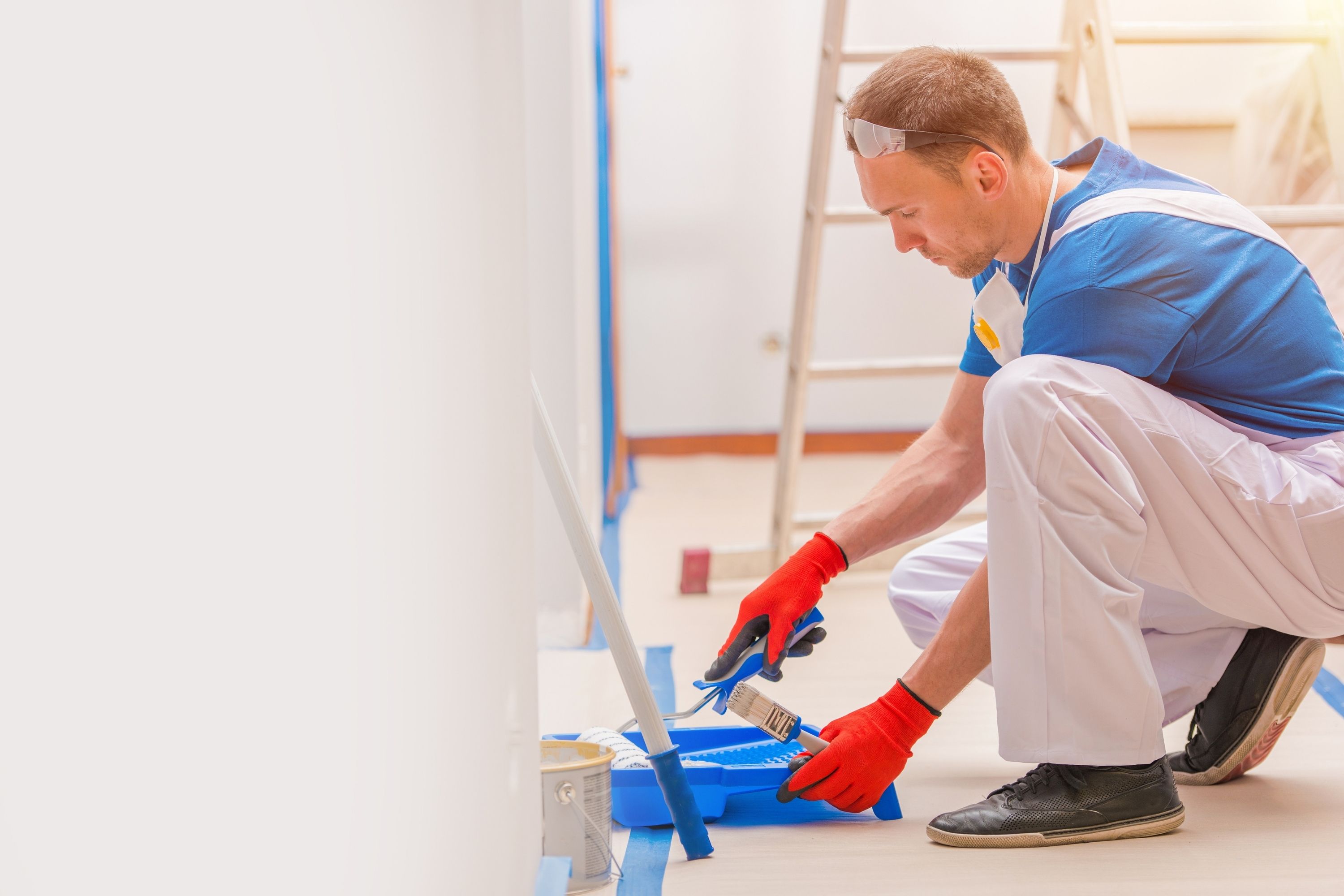
Credits: welcomia, via Canva.com
What Solvents And Fillers Do In Paints?
These two also belong to the important components of any paint that you use. Water that latex paints contain, as well as mineral spirits in oil-based paints, are needed for carrying and spreading the pigment color and binders onto the surface that is being painted. After that, they evaporate.
Hanging upon their use, paints can have distinct additives:
- Such fillers as talc, clay, lime or barite help to make the paint layer thicker
- Bonding additives serve for improving the sticking ability of a paint to different surfaces
- When enamel is added to paints, it is needed for making them harder, way more durable, and less porous after they get dry
- If paint contains conditioners or antimicrobial additives, they are used for improving the flow first of all. But also, they serve for reducing the brush drag, for resisting mildew, and making the leveling ability of a paint better
- Glitter can be added for enhancing the reflective abilities of a paint
- Even scents can be included to make paint smell better!
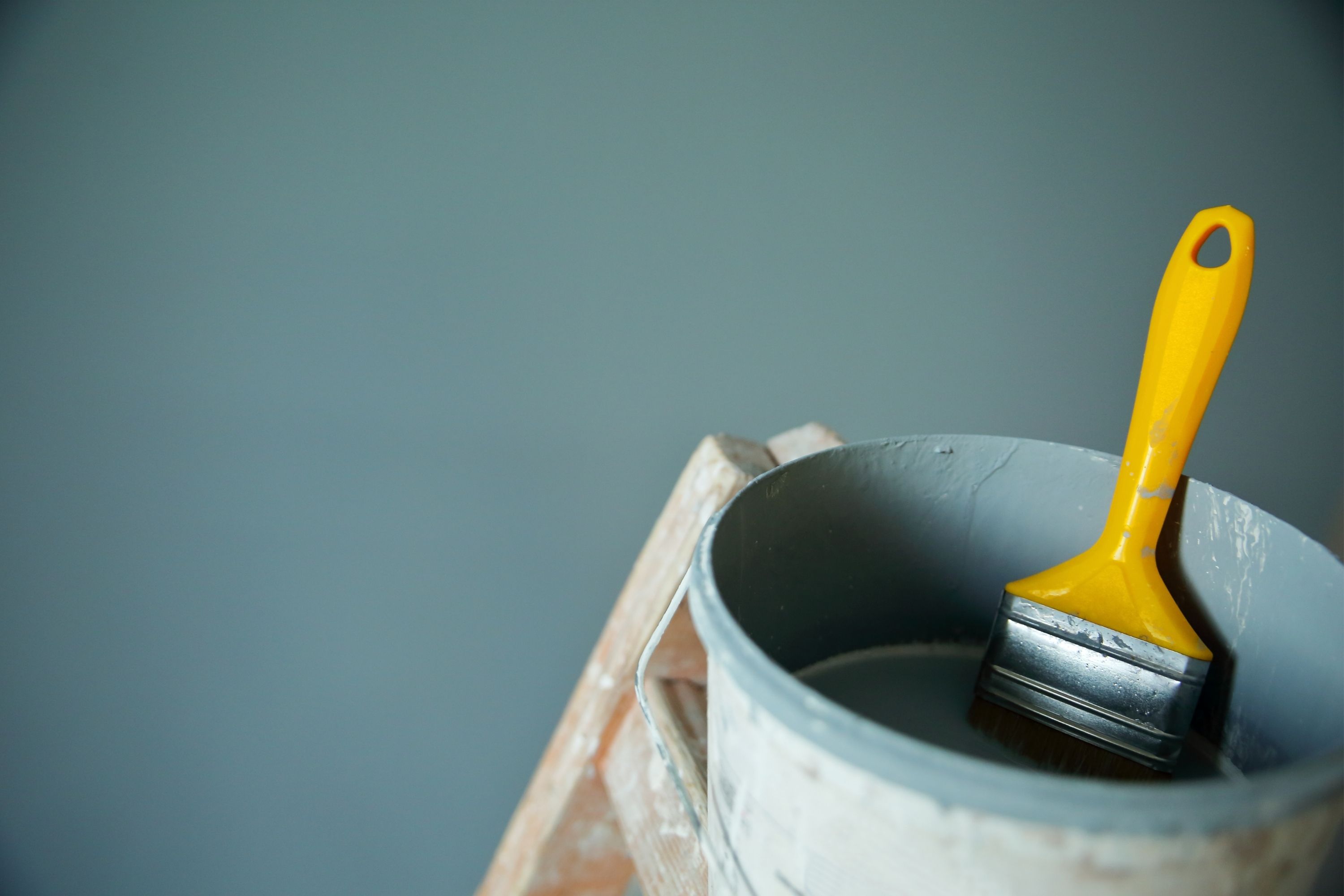
Credits: aydinmutlu, via Canva.com
Water-Based Paints
According to their name, these paints consist of binders and pigments that are blended in water which serves as the carrier. They are known for drying faster as water evaporates thus leaving the color behind.
The surfaces that were painted with this type of paint are easier to clean and maintain, they also hold their color way better in comparison to their oil-based “cousins”. In addition, this kind of paint is more environmentally friendly if we compare it to the oil-based alternative.
After water-based paints dry completely, they create a durable and flexible paint layer which makes them ideal for applying on ceilings and walls.

Credits: aydinmutlu, via Canva.com
Oil-Based Paints
As you could already guess from their name, oil-based paints contain natural oils in them, for instance, soybean oil or linseed oil. They are made of pigments, oil resin binders, and a solvent thinner. This is why, after we apply such a paint onto a surface, when it dries, it leaves a durable and long-lasting hard coat.
In comparison to water-based paints, their oil-based alternatives are harder to clean. They are also more suitable for painting doors, trims, and baseboards. If you need to make use of an oil-based paint, do keep in mind that it will be drying longer in comparison to a water-based one. Also, due to its content specifics, to clean the brushes and tools that were used for painting, you will have to make use of paint thinners or mineral spirits!

Can Exterior Paint Be Used For Inside Surfaces?
In theory, exterior paints could be successfully used for painting things indoors. They have perfect covering abilities, they are way more durable in comparison to the interior paints, and besides, they attach to most surfaces like glue!
However, there is one big problem about this type of paint. See, exterior paints, unlike their interior counterparts, contain chemicals that are not safe when being used in the interior environment. Those chemicals include mildewcide, resin, and chemical makeup that release gases that are harmful for people. Inhaling the vapors of those chemicals can lead to quite nasty health issues! Nevertheless, if you apply them outdoors, they will cause no harm. So probably your attached garage could be the only place where such paint can be used!

Credits: AleksanderNakic, via Canva.com
What Can Happen If I Accidentally Use Interior Paint Outside?
We are all humans and thus all of us can make mistakes. It does not matter whether you simply grabbed a wrong can with paint or you started painting your outdoor surface with the interior paint not knowing that it is not quite suitable for such kind of job. Accident happened and this is definitely not the end of the world!
What can go wrong if you did apply interior paint outdoors? Well, since interior paints are not supposed to withstand the harsh and severe weather conditions, such as rains, snowfalls, or storms, you have to be prepared that your freshly painted surface will last way less. It means that you will have to repaint it in two or five years most likely. But if you painted it with exterior paint, it would last for ten or even fifteen years!
Since interior paints are not designed for dealing with nature abuses, your recently painted surface will fade pretty fast. Also, it can break down and chalk rather quickly and easily since it contains no protective components that could save the paint from UV, temperature fluctuations, or mildew.
However, there are a few things you can still do to save the situation (and your wall or whatever you painted there). First of all, you can still cover the surface you have just painted with the interior paint using an exterior one. Also, if the job is almost done, you could as well finish it. But if the painting project is still at the very beginning, you still have a chance to switch to exterior paint and paint over it.
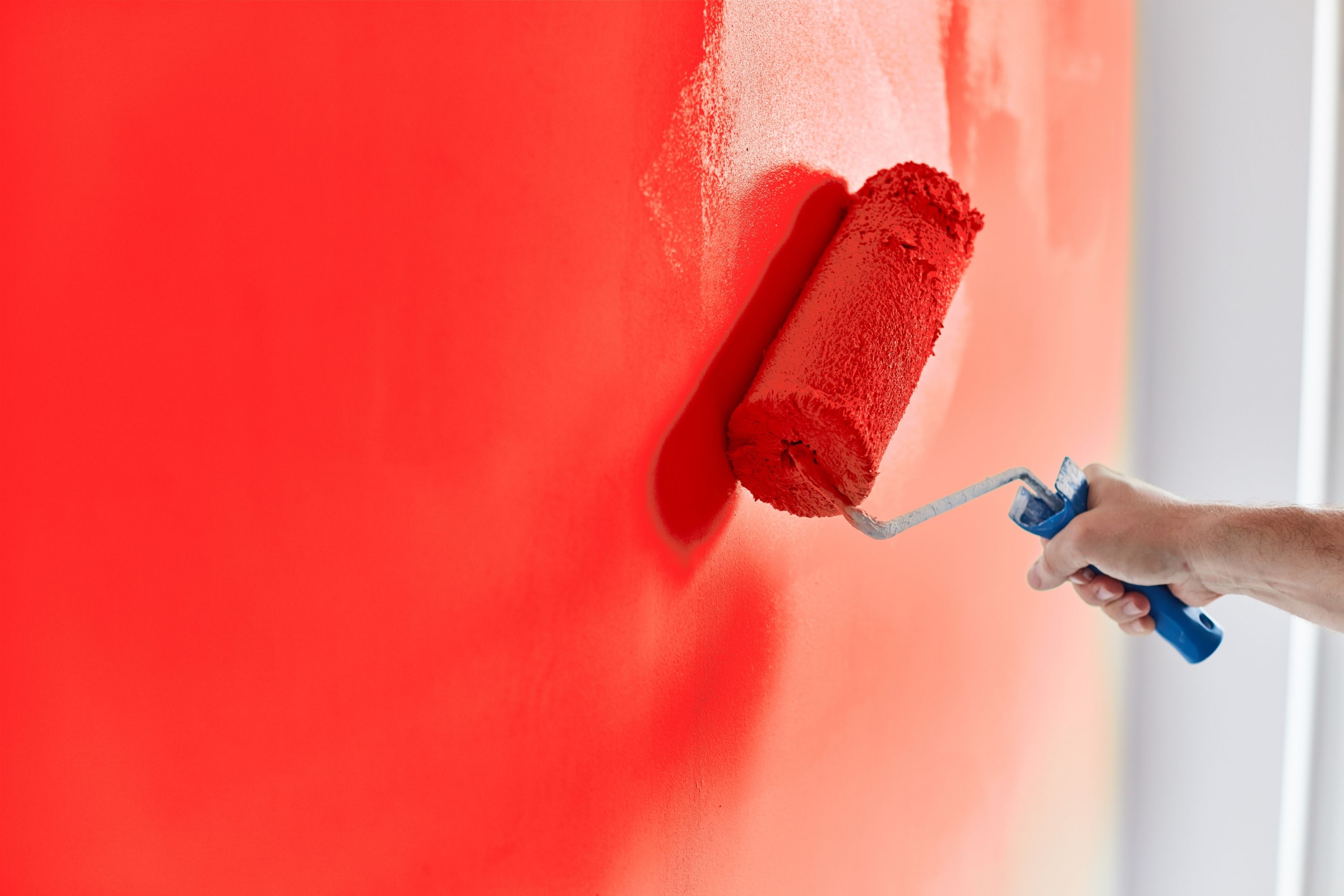
Credits: ArturNyk, via Canva.com
Is It Possible to Paint With an Interior Paint Over the Exterior One?
This is probably one of the most frequently asked questions that people ask, and the short answer is yes. On the other hand, why would you want to do this?
As we have already mentioned above, interior and exterior paints are totally different in terms of structure and content, as well as in terms of chemicals used for making them. Their characteristics are thus also distinct.
So if you decide to apply interior paint over the exterior one, you will first have to prepare the surface that will be painted. In addition, if your interior paint that will be used is water-based or oil-based, you will also have to use a primer.
And of course, you must not forget that, even if you apply interior paint over the layer of the exterior one, it will still become ruined very quickly!
Besides, there is also a financial issue. Since it will not last long enough, it means that you will have to apply a new coat of paint pretty soon. Which, in its turn, means more expenses. And naturally, it will increase the labor factor as well.
So as you could already understand, interior paints are created for being used indoors only. Of course, if you accidentally apply one of those outside on the external surface, it will not cause much disaster or damage, but you will have way more fuss with repainting the surface since renovation will be needed much sooner.
Also, exterior paints are better to be applied on the outdoor surfaces simply because they are much more harmful for our health in comparison to the interior ones!
So if you are up to any painting projects that are going to take place soon, be careful and make sure you will be using the correct paint on a proper surface.
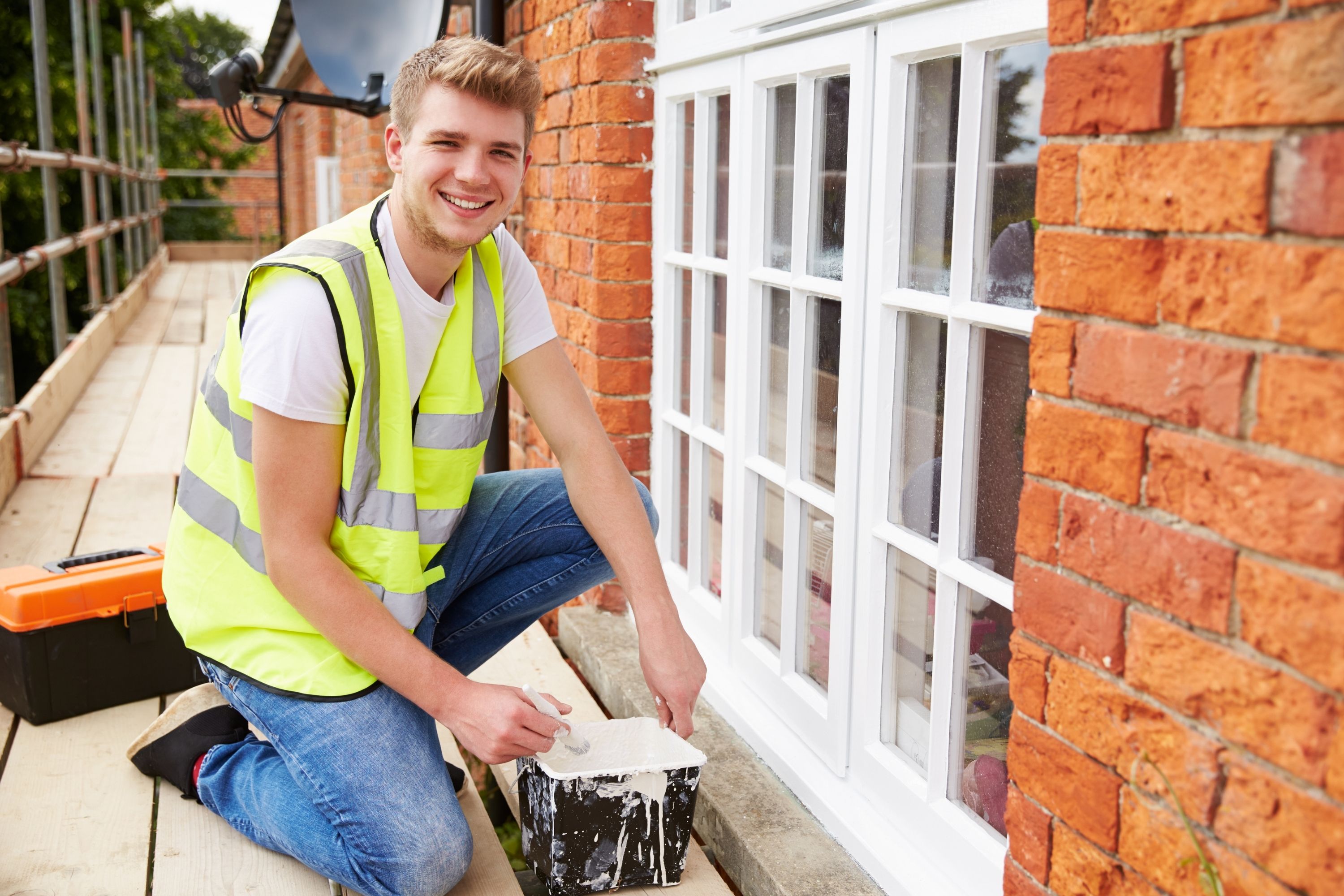
Credits: Monkey Business Images, via Canva.com
Ever wished paint sampling was as easy as sticking a sticker? Guess what? Now it is! Discover Samplize's unique Peel & Stick samples. Get started now and say goodbye to the old messy way!
Get paint samples




Frequently Asked Questions
⭐ Can you use interior paint outside if in shade?
No, this type of paint is not meant for the outdoor use.
⭐ Can you use interior paint on a outside porch swing?
You can if you don’t mind repainting it every two to five years.
⭐ When is it better not to paint outside?
You’d better avoid painting outside on a rainy day or when the air is too humid. Also, windy days are not good for painting projects.
24 thoughts on “Can You Use Interior Paint Outside?”
Leave a Reply

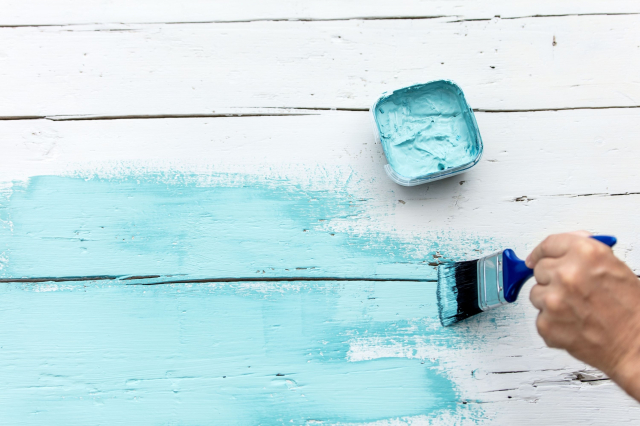

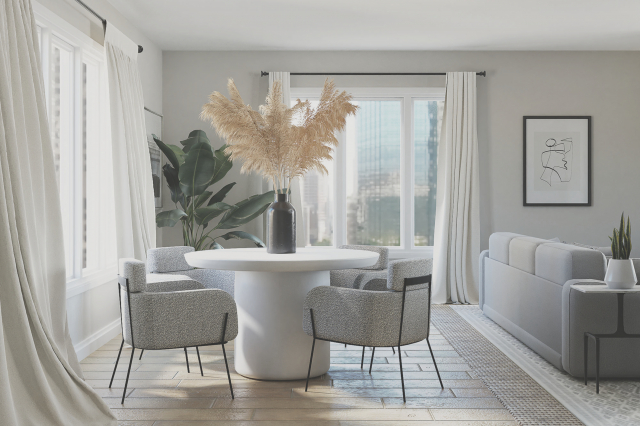
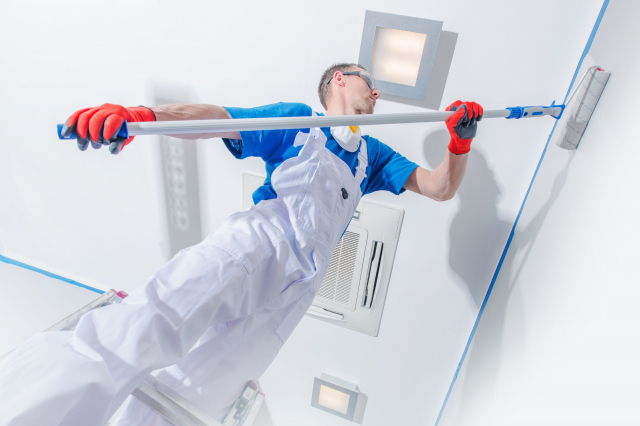
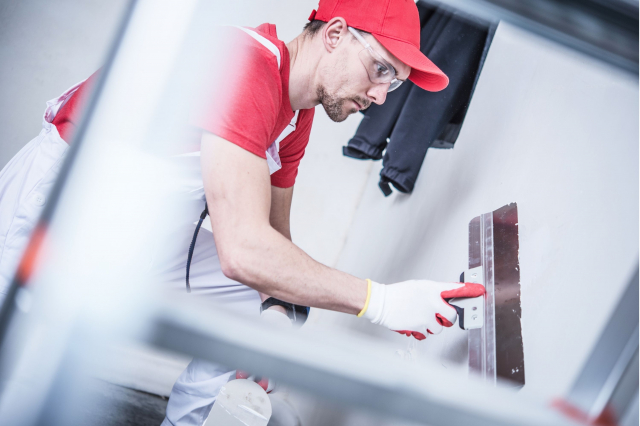
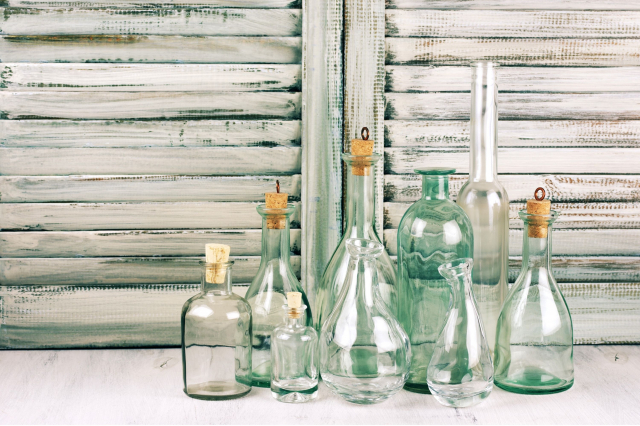

Hello. I have a question. Can you use interior paint outside on concrete? Will it last?
Hello. Unfortunately, we can’t guarantee that interior paint will serve you long. See, this type of paint may contain organic pigments for color. And certain types of such pigments significantly fade when exposed to sun/wind/show/rain, etc.
Can you use interior semi gloss paint outside?
You know, I think it doesn’t actually matter whether it’s a semi-gloss or another type of sheen. Any interior paint is not designed for exterior use since it won’t last long.
I need to repaint my front door, but I only have some Behr interior paint left. Can Behr interior paint be used outside?
I guess you can, but you should understand that interior paint won’t last the same long as exterior paints would. I guess you’d better buy exterior paint. Otherwise, you’ll have to repaint your door much more often!
Can I use interior paint outside on wood?
Technically, you can use interior paint outside, but you should realize that it won’t stand up well to weather conditions. That’s because interior paint is designed for indoors use only. But generally, you can paint wooden surfaces with it too.
Hi everyone! Need your help, guys. Can I use interior paint outside if I seal it? Will sealing extend its lifespan?
I guess you can use it with a sealant, but it will hardly give you the same durability and lifespan as exterior paints have.
How long does interior paint last outside? Is it the same durability as for exterior paint?
Unfortunately, interior paints don’t last the same long as exterior paints. If you use interior paint outdoors, you may have to repaint the surface in a year or two depending on paint qualities and your local climate.
Can you use interior paint on the exterior door? I like the color but I’m not sure that it will survive for long.
You’re right, it won’t survive on the exterior door. Try to find the outdoor paint of the color you want. It may take some time, but like this, you won’t have to repaint the door every few months.
Can I use interior latex paint outside? I know that interior paints are better not to be applied outdoors, but we need to start painting tomorrow and we still can’t find the outdoor paint of the proper color. However, we have a couple of cans of the color we need but the paint is interior. What shall we do?
I’d say you can try to use the interior paint since technically, latex interior paint can be used outdoors. But still, I’d not recommend you do this if the surface that’s supposed to be painted is large (e.g. a house’s wall, etc.). The paint will start fading and peeling way faster which means that you’ll have to repaint the surface sooner. Isn’t it better to buy a proper paint at once?
Hi guys and ladies! I have a little issue with paint and I really hope somebody can help me out with that. Can I use interior paint outside on wood?
I tried painting my wooden garden table with interior paint once, but since it was exposed to sun and rain 24/7, the paint peeled very quickly and by the end of summer I had to repaint it.
How long does interior paint last if applied outside? See, I had to paint my garden furniture recently, and since I didn’t find any exterior paint, and it was too late to drive somewhere to buy it, I had to use interior paint instead. But now I’m worried about how long it will last. Have any of you ever used interior paint outdoors? Did it work?
Well, I can only tell you that interior paint will last less if applied outside. It is not designed for withstanding mildew, rain, snow, and other external factors and weather conditions. So you should not expect it to last long. Probably, a couple of months if the weather is more or less fine.
Can you paint inside when its raining outside? I heard it’s better to wait for a dry and warm weather.
You heard it right. I would not recommend you painting indoors on a rainy day! The air is too humid so the paint may not attach properly. Besides, it may take much longer for it to dry completely.
How long can exterior paint last on the garden furniture? I repainted mine last year. Do you think it will survive until the next summer?
I can tell you that it will survive way longer! Exterior paints last for five years at least, and if you applied it correctly, you can expect it to stay ok for even longer.